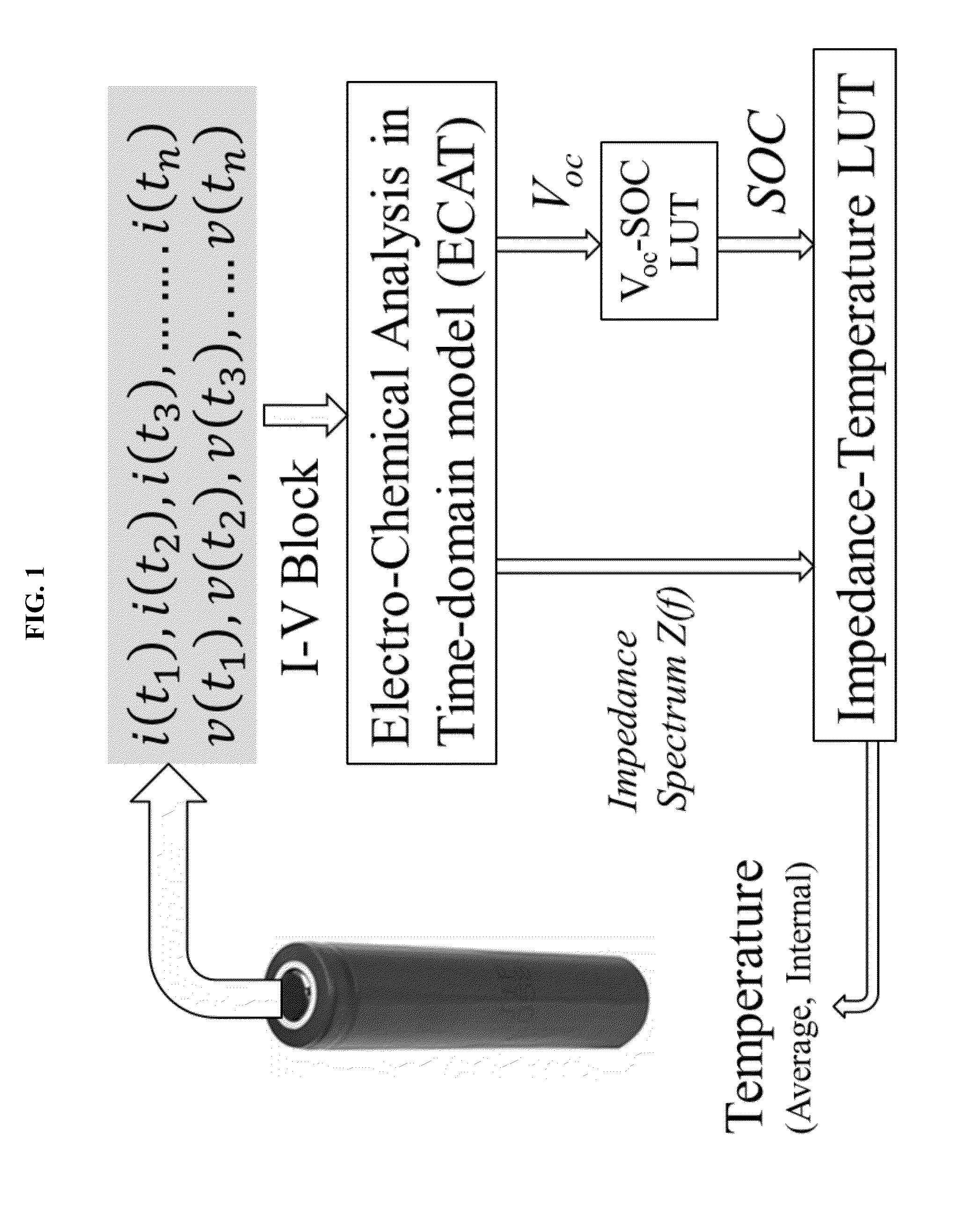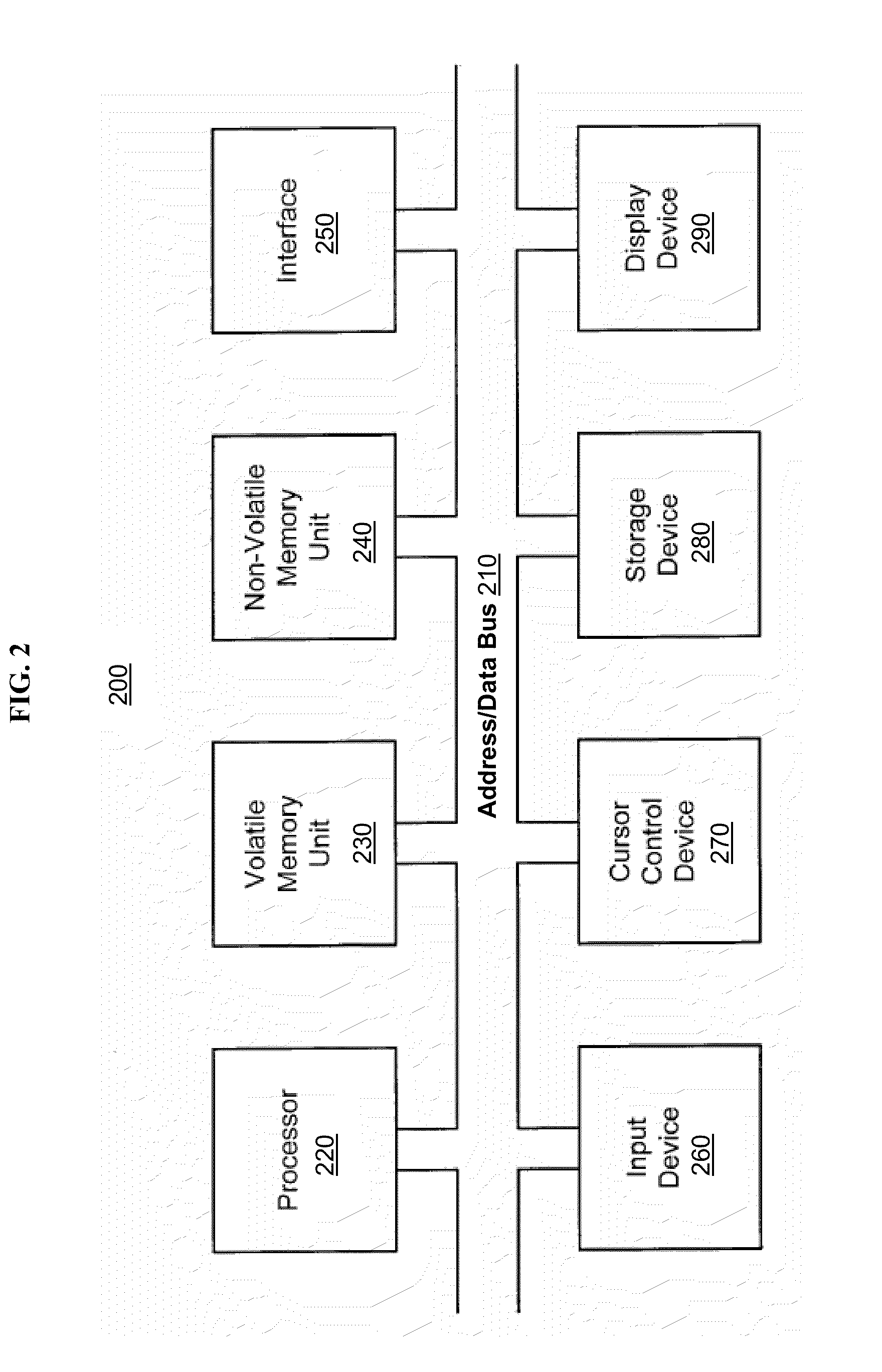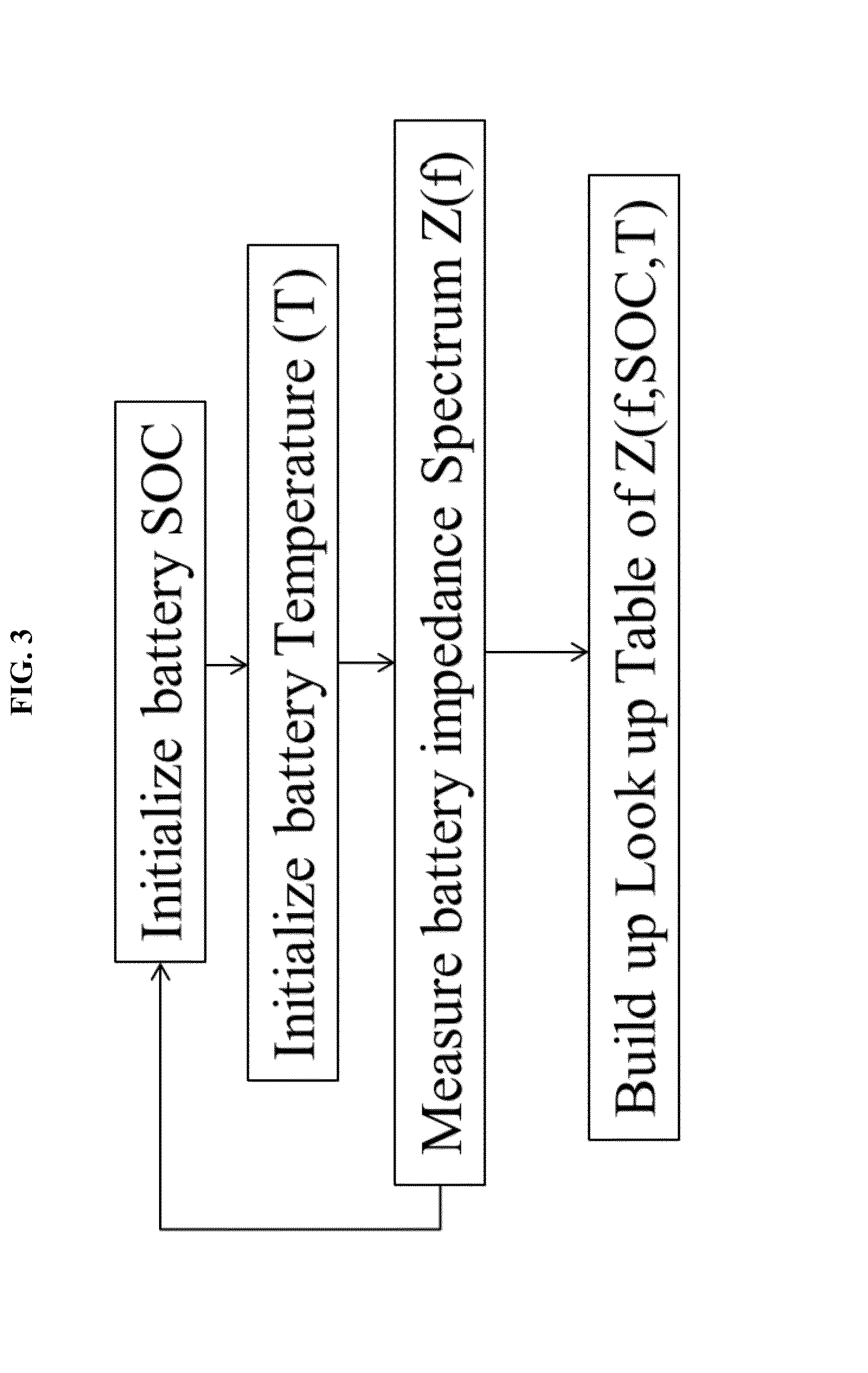Methods and apparatus for sensing the internal temperature of an electrochemical device
- Summary
- Abstract
- Description
- Claims
- Application Information
AI Technical Summary
Benefits of technology
Problems solved by technology
Method used
Image
Examples
example 1
Calibration of Impedance Spectrum as a Function of Temperature and State-of-Charge
[0160]Battery impedance spectrum Z(f) is calibrated as the function of state-of-charge SOC and temperature T. A look-up table (LUT) of Z vs. Tat different SOC is then built with the calibration. The procedure for the calibration is as follows.
[0161]First, the voltage is floored to the minimum voltage of the battery, and the SOC is regarded as zero. In this Example 1, a Sanyo L333 NiMH cell is used with 1.5 Ah capacity and a voltage range is from 2.8 V to 4.2 V. We discharge the battery until it reaches 2.8 V. A Solartron 1260 is used for the current source. Next, the battery is charged to its 10% SOC, by charging the battery with a C / 5 current, i.e. 0.3 A, for half an hour.
[0162]Then the battery is placed into a thermal chamber and battery impedance spectrum is measured at different temperatures. The cell is attached with a thermocouple to the surface for temperature monitoring. An impedance spectromet...
example 2
Demonstration of Estimation of Internal Temperature of a Battery
[0164]This example demonstrated how to derive the battery inner temperature just based on the measured battery voltage and current data. First, the battery is initialized and the battery's open circuit voltage is measured with the voltage signal at initial time. Next, the battery is driven with a driving profile and the battery's current and voltage is sampled with a rate of 100 milliseconds (sampling period). The driving profile for this example is a double-pulse driving profile as described above.
[0165]The current and voltage data is input into a battery model. From the battery model, we obtain estimates of battery SOC and transfer impedance spectrum. Battery SOC is calculated based on the initial open circuit voltage and Coulomb counting. The battery impedance spectrum is calculated based on the impulse response model as described in this specification.
[0166]Then the battery inner temperature is estimated based on th...
example 3
Demonstration of the Relationship Between the Cell Impedance / Resistance, Temperature, and SOC
[0167]This information can be used to construct an empirical look-up table so that the temperature can be quickly determined once the impedance and SOC are known.
[0168]A 1.5 Ah, cylindrical commercially available Sanyo cell 18650 is composed of NiCoMn-based composite (LiMn1 / 3Ni1 / 3Co1 / 3+LiMn2O4) positive electrode and a graphite negative electrode. AC electrochemical impedance spectra (EIS) are acquired with a Solartron Electrochemical Interface 1260 coupled with a Solartron frequency response analyzer 1255. The EIS measurements are carried out in a frequency range between 0.01 to 100 kHz (0.01 to 1 Hz) and an AC amplitude of 0.5 mV.
[0169]FIG. 5 shows impedance spectra from the cell tested at different SOC (10%, 30%, 50%, 70%, and 90%) and various temperatures (10° C., 25° C., and 40° C.). Note that in FIG. 5, each temperature label applies to five curves of varying SOC, i.e. there are three ...
PUM
 Login to View More
Login to View More Abstract
Description
Claims
Application Information
 Login to View More
Login to View More - R&D
- Intellectual Property
- Life Sciences
- Materials
- Tech Scout
- Unparalleled Data Quality
- Higher Quality Content
- 60% Fewer Hallucinations
Browse by: Latest US Patents, China's latest patents, Technical Efficacy Thesaurus, Application Domain, Technology Topic, Popular Technical Reports.
© 2025 PatSnap. All rights reserved.Legal|Privacy policy|Modern Slavery Act Transparency Statement|Sitemap|About US| Contact US: help@patsnap.com



